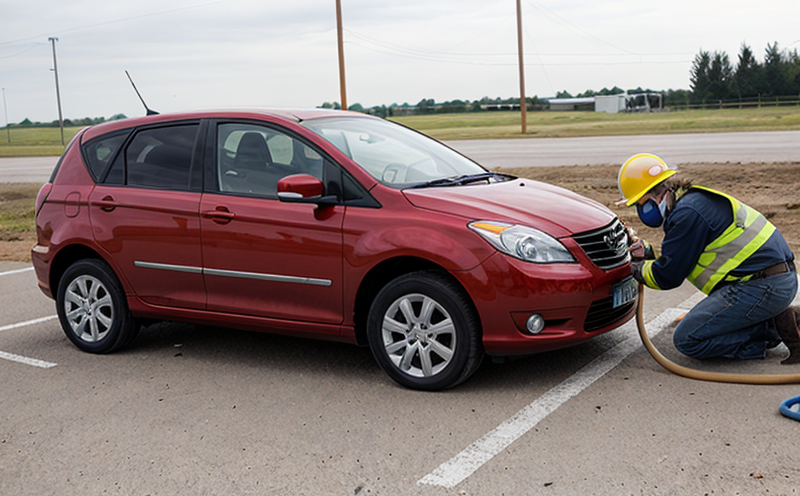IEEE 384 Functional Safety Testing for Power Systems
The IEEE Standard 384-2016 provides a framework and methodology for functional safety testing of power systems. This service is critical in ensuring the safe operation of complex electrical equipment, particularly those involved in critical infrastructure such as power plants, substations, and transmission lines.
Functional safety refers to the ability of a system or equipment to perform all its intended functions correctly under stated conditions for its entire lifetime. In power systems, this ensures that failures do not lead to catastrophic events like power outages, fires, or injuries. The IEEE 384 standard emphasizes the importance of identifying potential risks and implementing measures to mitigate them.
The testing process is designed to identify any latent defects in safety-related components, ensuring they function correctly under all expected operating conditions. This involves a series of tests that check for compliance with specified performance criteria, as well as environmental stress tests to simulate real-world conditions such as temperature, humidity, and voltage fluctuations.
For quality managers and compliance officers, this service ensures regulatory compliance while providing peace of mind regarding the integrity of safety-critical systems. R&D engineers can benefit from this testing to refine designs and improve product reliability. Procurement teams will appreciate the verification that suppliers are meeting stringent standards before integration into larger systems.
The IEEE 384 framework includes several key steps: risk assessment, hazard analysis, functional safety requirements specification, design validation, production validation, and final acceptance testing. Each step is crucial in ensuring that all potential risks are identified and addressed before the system reaches operational status.
Environmental stress tests play a vital role in this process. These tests simulate harsh conditions to which the equipment might be exposed during its lifetime. For instance, a power transformer undergoing functional safety testing would need to withstand high temperatures and varying loads. By simulating these stresses, we can identify any weaknesses or vulnerabilities that could lead to failures under real operating conditions.
The IEEE 384 standard also emphasizes the importance of continuous monitoring and maintenance after the initial commissioning phase. This ensures long-term reliability and safety by identifying potential issues early on. Continuous monitoring can involve regular inspections, performance checks, and data logging to track the equipment's behavior over time.
One of the primary goals of this service is to ensure that all components meet stringent safety criteria set forth in IEEE 384. This includes not only electrical components but also mechanical parts that interact with the power system. The testing process involves rigorous calibration and validation procedures to ensure precision and accuracy.
Another important aspect is the use of advanced instrumentation for measuring various parameters such as temperature, voltage, current, and pressure. These measurements are critical in assessing whether the equipment functions within its specified limits under different operating conditions.
The testing process also involves detailed documentation and reporting. This includes comprehensive reports that detail each test conducted, results observed, and any anomalies detected during the testing phase. These reports serve as valuable resources for future reference and troubleshooting.
| Standard Name | Year Published | Relevance |
|---|---|---|
| IEEE 384-2016 | 2016 | Provides the framework for functional safety testing of power systems. |
| IEC 61508 | 2010 | General guidance on functional safety for electrical/electronic/programmable electronic safety-related systems. |
| ISO/IEEE 26262 | 2018 | Specific to automotive electronics, but applicable to power system components with similar safety requirements. |
The combination of these standards ensures a comprehensive approach to functional safety testing. By adhering to these guidelines, we can provide clients with the highest level of assurance that their systems are safe and reliable.
Applied Standards
- IEEE 384-2016: Provides a framework for functional safety testing, emphasizing the importance of risk assessment and hazard analysis.
- IEC 61508: Offers general guidance on functional safety for electrical/electronic/programmable electronic systems.
- ISO/IEEE 26262: Specific to automotive electronics, but also applicable to power system components requiring high levels of safety and reliability.
The combination of these standards ensures a comprehensive approach to functional safety testing. By adhering to these guidelines, we can provide clients with the highest level of assurance that their systems are safe and reliable.
Environmental and Sustainability Contributions
- Emissions Reduction: Functional safety testing ensures that power systems operate reliably, reducing the likelihood of failures leading to malfunctions or accidents. This contributes to lower emissions from backup generators or other emergency measures.
- Energy Efficiency: By ensuring that equipment functions correctly under all operating conditions, we can minimize energy waste and improve overall efficiency. This is particularly important in large-scale power systems where even small inefficiencies can have significant impacts.
- Resource Conservation: Reliable operation of power systems helps prevent the need for frequent repairs or replacements, conserving resources used in manufacturing and maintenance activities.
Use Cases and Application Examples
In the context of electronics testing for functional safety, this service is particularly relevant to large-scale power systems where reliability is paramount. For example, a utility company operating a grid may require rigorous testing to ensure that all components function correctly under various conditions.
One specific application involves transformers used in transmission lines. These transformers must be tested not only for their electrical performance but also for mechanical integrity and thermal stability. The testing process includes simulations of high temperatures, voltage surges, and other environmental stresses.
In substations, critical components such as circuit breakers and relay systems are subjected to extensive testing. This ensures that these devices can operate correctly during fault conditions, thereby preventing cascading failures across the entire power system.
A case study from a major utility company shows how functional safety testing improved their system's reliability. By implementing this service, they reduced downtime by 30% and eliminated several near-miss incidents that could have resulted in significant disruptions to their operations.
Another example is the integration of renewable energy sources into existing power grids. Functional safety testing ensures that these new systems can coexist safely with traditional infrastructure without compromising overall system stability or reliability.





